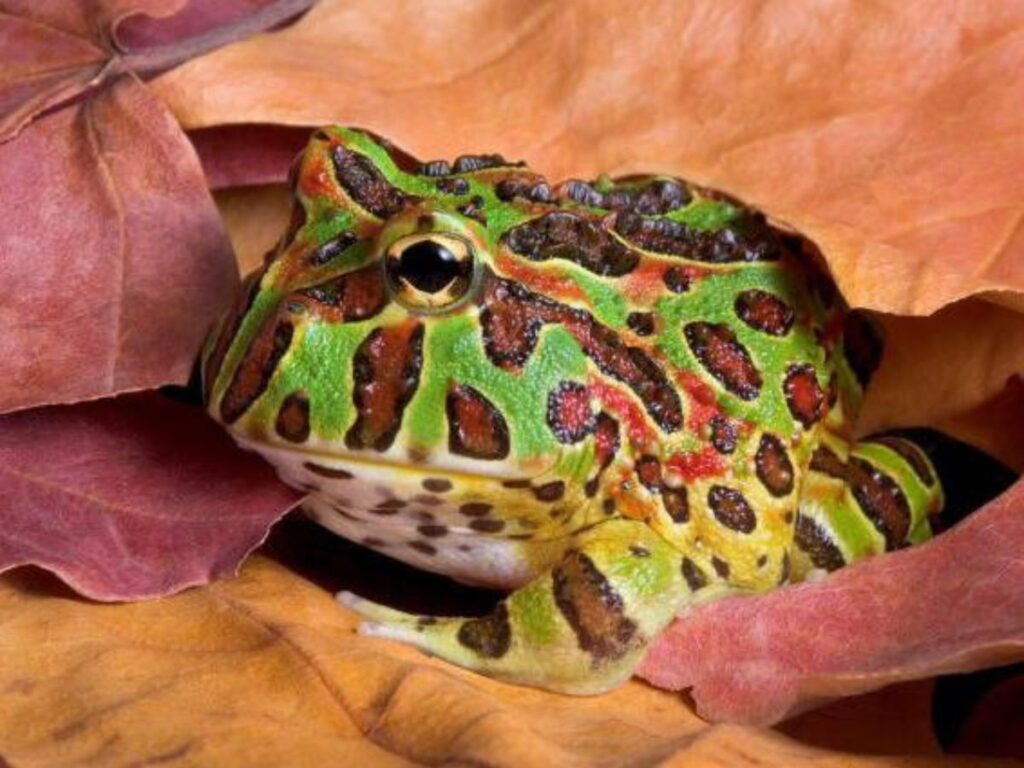🐸 Pacman Frogs and Other Pets: Can They Coexist?
What to Know About Keeping Pacman Frogs with Other Animals
Pacman Frogs and Other Pets - At a Glance
Pacman frogs should not share enclosures with other pets, including other frogs. However, they can coexist safely in the same household if kept in separate, secure enclosures. Supervision, hygiene, and limited exposure are key to preventing stress, injury, or disease between pets.
It’s not unusual for Pacman frog keepers to also have other pets—whether that’s reptiles, fish, cats, dogs, or even birds. But can these creatures safely share space, or even a room, with your horned frog?
In this guide, you’ll learn:
Why Pacman frogs should live alone
Which pets can coexist in the same household (but not the same tank)
Hygiene and safety protocols
How to reduce stress between species
What never to do when housing multiple animals
Can Pacman Frogs Be Housed with Other Pets?
In the Same Enclosure?
No. Pacman frogs are solitary, aggressive, and cannibalistic.
| Pet Type | Safe to House with Frog? | Why or Why Not |
|---|---|---|
| Other frogs | ❌ No | Will attack or eat each other |
| Fish or aquatic pets | ❌ No | Different habitat needs and cross-contamination risks |
| Insects (as pets) | ❌ No | Will be eaten or stress the frog |
| Small reptiles or amphibians | ❌ No | At risk of predation or injury |
Even juvenile frogs of the same species will often attempt to bite or consume each other when housed together.
👉 Handling Pacman Frogs: Should You or Shouldn’t You?
👉 Can Pacman Frogs Live Together? Pros and Cons

Coexisting with Cats, Dogs, and Other Household Pets
Pacman frogs can live in homes with cats, dogs, birds, or reptiles, as long as you follow these precautions:
✅ Tips for Safe Coexistence:
Keep the frog’s enclosure securely closed and out of reach of curious paws or snouts
Place the enclosure in a quiet, low-traffic area to reduce stress
Wash hands between handling other pets and maintaining your frog’s habitat
Never allow pets to sit on, lick, or climb the frog tank
Use a screen lid with clips for added security
Amphibians absorb toxins through their skin—dander, oils, and cleaning sprays from other pets can be harmful.
Cross-Contamination and Hygiene Protocols
Frogs are susceptible to zoonotic diseases, parasites, and bacteria that may be present in the saliva, feces, or bedding of other animals.
Hygiene Do’s and Don’ts:
| Action | Safe? | Recommendation |
|---|---|---|
| Using the same feeding tongs | ❌ No | Use species-dedicated tools |
| Cleaning tanks back-to-back | 🚫 Risky | Wash hands and tools thoroughly between tanks |
| Air-sharing with rodents or birds | ✅ With ventilation | Keep separate and monitor airflow |
| Letting pets near frog enclosure | ❌ No | Prevent climbing, pawing, or loud noises |
👉 How to Clean a Pacman Frog Tank Safely
👉 Do Pacman Frogs Smell Bad? Odor Control Tips
Stress and Behavioral Risks
Even if animals are kept apart, frogs are sensitive to sound, vibration, and light. A dog barking near the tank, a cat scratching at the glass, or bright bird chirping can elevate stress levels and suppress appetite.
Signs Your Frog Is Stressed:
Refusing food
Constant burrowing or hiding
Color fading or blotching
Unusual aggression or lethargy
Final Thoughts
Pacman frogs may be popular pets, but their true roots are in the lush, rain-fed soils of South America. Understanding their wild lifestyle helps you become a better, more ethical keeper—and a stronger advocate for amphibian conservation worldwide.
🙋♀️ FAQ: Wild Pacman Frog Life
Q: Do Pacman frogs live in trees?
A: No. They are strictly terrestrial, living on or below the ground.
Q: How far do they travel?
A: Very little. Pacman frogs are sedentary, ambushing prey instead of roaming.
Q: Are wild Pacman frogs endangered?
A: Some species are considered vulnerable due to habitat loss. Conservation efforts are ongoing.
